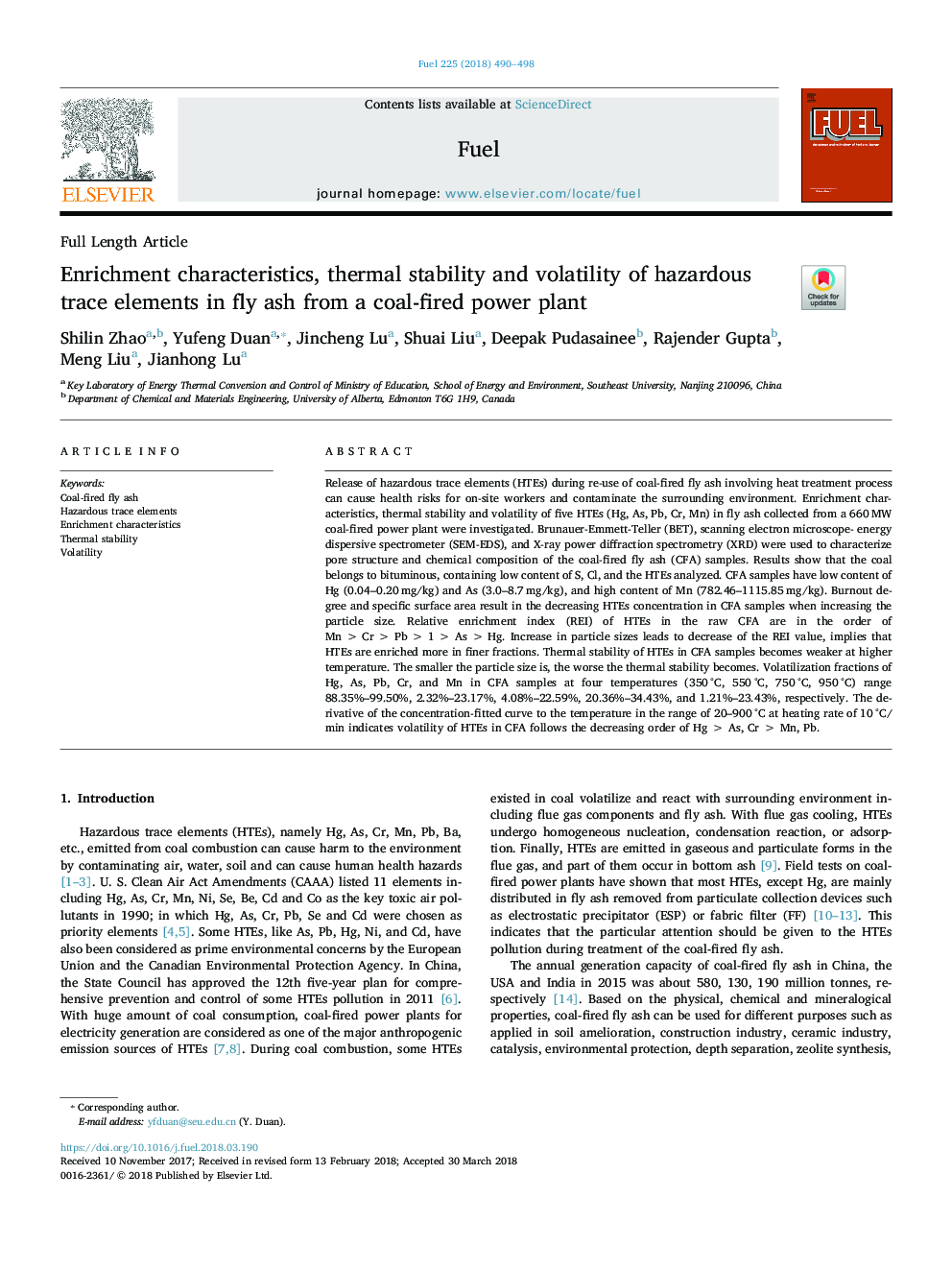| Article ID | Journal | Published Year | Pages | File Type |
|---|---|---|---|---|
| 6631045 | Fuel | 2018 | 9 Pages |
Abstract
Release of hazardous trace elements (HTEs) during re-use of coal-fired fly ash involving heat treatment process can cause health risks for on-site workers and contaminate the surrounding environment. Enrichment characteristics, thermal stability and volatility of five HTEs (Hg, As, Pb, Cr, Mn) in fly ash collected from a 660â¯MW coal-fired power plant were investigated. Brunauer-Emmett-Teller (BET), scanning electron microscope- energy dispersive spectrometer (SEM-EDS), and X-ray power diffraction spectrometry (XRD) were used to characterize pore structure and chemical composition of the coal-fired fly ash (CFA) samples. Results show that the coal belongs to bituminous, containing low content of S, Cl, and the HTEs analyzed. CFA samples have low content of Hg (0.04-0.20â¯mg/kg) and As (3.0-8.7â¯mg/kg), and high content of Mn (782.46-1115.85â¯mg/kg). Burnout degree and specific surface area result in the decreasing HTEs concentration in CFA samples when increasing the particle size. Relative enrichment index (REI) of HTEs in the raw CFA are in the order of Mnâ¯>â¯Crâ¯>â¯Pbâ¯>â¯1â¯>â¯Asâ¯>â¯Hg. Increase in particle sizes leads to decrease of the REI value, implies that HTEs are enriched more in finer fractions. Thermal stability of HTEs in CFA samples becomes weaker at higher temperature. The smaller the particle size is, the worse the thermal stability becomes. Volatilization fractions of Hg, As, Pb, Cr, and Mn in CFA samples at four temperatures (350â¯Â°C, 550â¯Â°C, 750â¯Â°C, 950â¯Â°C) range 88.35%-99.50%, 2.32%-23.17%, 4.08%-22.59%, 20.36%-34.43%, and 1.21%-23.43%, respectively. The derivative of the concentration-fitted curve to the temperature in the range of 20-900â¯Â°C at heating rate of 10â¯Â°C/min indicates volatility of HTEs in CFA follows the decreasing order of Hgâ¯>â¯As, Crâ¯>â¯Mn, Pb.
Related Topics
Physical Sciences and Engineering
Chemical Engineering
Chemical Engineering (General)
Authors
Shilin Zhao, Yufeng Duan, Jincheng Lu, Shuai Liu, Deepak Pudasainee, Rajender Gupta, Meng Liu, Jianhong Lu,
